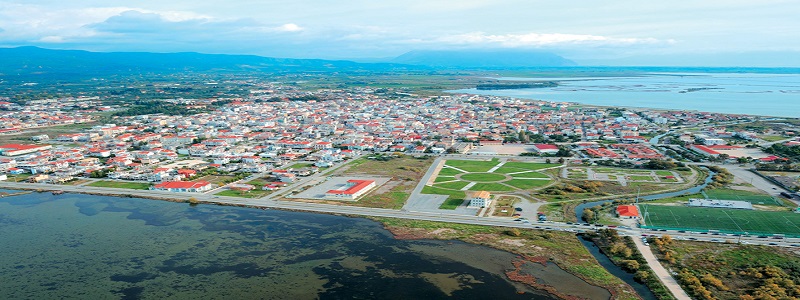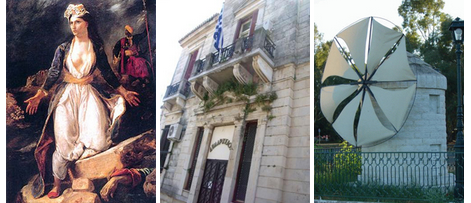
Messolonghi was first mentioned by a Venetian called Paruta when he was describing the naval battle of Nafpaktos. According to the predominant historical opinion, its name came from the combination of two Italian words, MEZZO and LANGHI (Mezzolanghi) which means “in the middle of lakes” or MESSO and LANGHI (Messolanghi) which means “a place surrounded by lakes”.Messolonghi was first mentioned by a Venetian called Paruta when he was describing the naval battle of Nafpaktos.According to the predominant historical opinion, its name came from the combination of two Italian words, MEZZO and LANGHI (Mezzolanghi) which means “in the middle of lakes” or MESSO and LANGHI (Messolanghi) which means “a place surrounded by lakes”.

Until 1700, Messolonghi was under Venetian domination. Its inhabitants were mostly fishermen. They lived in cabins which were made of a kind of waterproof straw and reed and stood on stilts above sea water so that they did not get in contact with it. These cabins or stilt-houses have always been called “pelades”.During the Orlov revolution in 1770 the fleet of Messolonghi was defeated and came to the Turks. Messolonghi revolted against the Turks on 20th May 1821. It was besieged twice by them. The first siege lasted from 25th October to 31st December 1822 and the enemy suffered great casualties. The second siege started on 15th April 1825 by Kioutachis whose army numbered 30,000 men and was later reinforced by another 10,000 men led by Ibrahim. After a year of relentless enemy attacks and facing starvation, the people of Messolonghi decided the Exodus of its Guards on the night of 10th April 1826. At the time, there were 10,500 people in Messolonghi 3,500 of which were armed. Very few people survived escaping the Turkish pincer movement after the betrayal of their plan.



North-west of Messolonghi are the remains of Plevrona (Asfakovouni), a town mentioned in Homer’s works. It participated in the Trojan expedition and was destroyed in 234 BC by Demetrius the Aitolian. The new town which was built on the remains of old Plevrona was one of the most important towns in Aitolia. Its monumental fortification comprised 30 towers and 7 gates. The remains of the theatre and an enormous water tank with 4 compartments still exist.Green parks, recreation areas, the lagoon, its history but also local pubs, taverns and fishmonger’s shops make Messolonghi an attractive place to its visitors.
Useful websites
-
Municipality of Messolonghi: http://messolonghi.gov.gr/
-
Diexodos – History Museum: http://www.diexodos.com.gr/
-
Messolonghi by locals: https://messolonghibylocals.com/
-
Visit Messolonghi: http://visitmes.gr/el-gr/
-
Messolonghi Nautical Club: http://www.nommes.gr/
Also websites with news in the area of Messolonghi and Western Greece:
